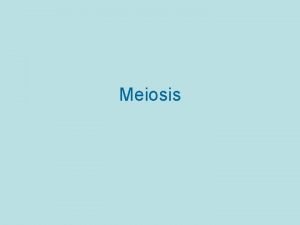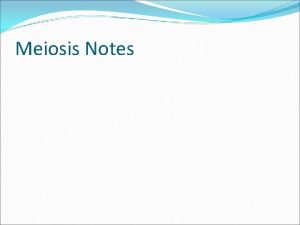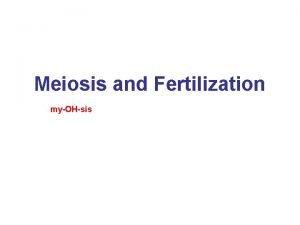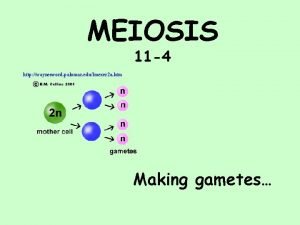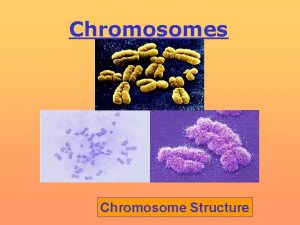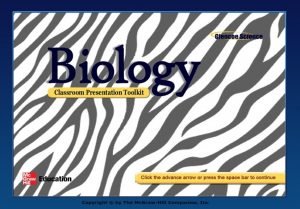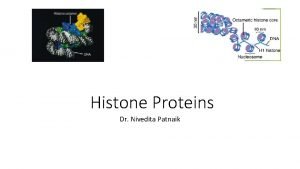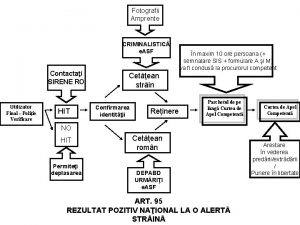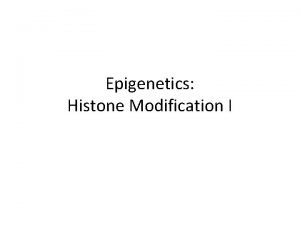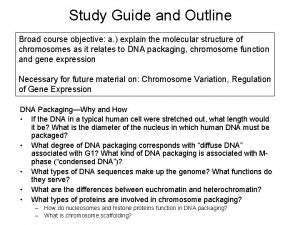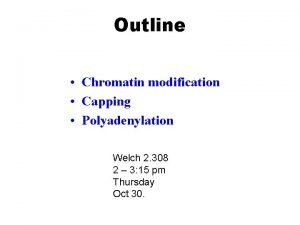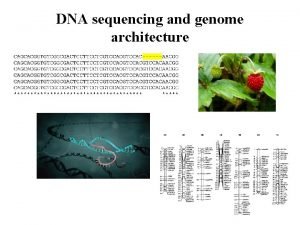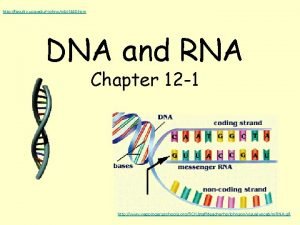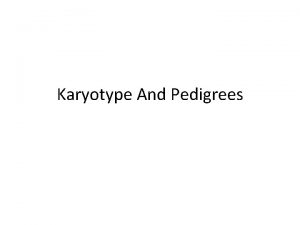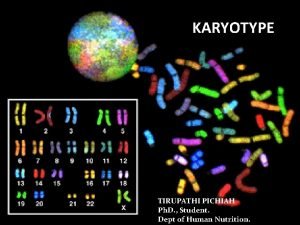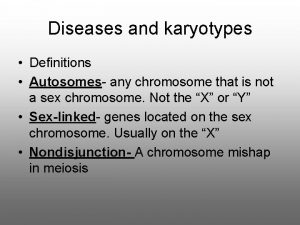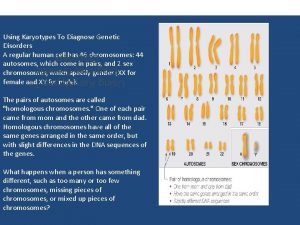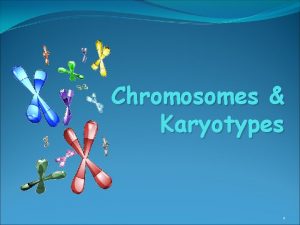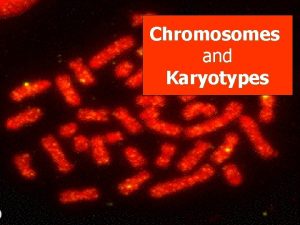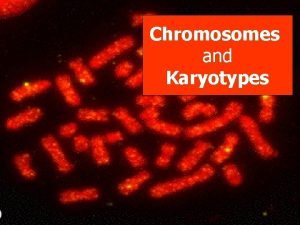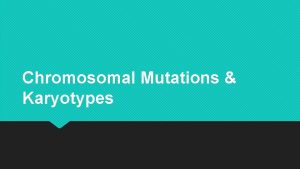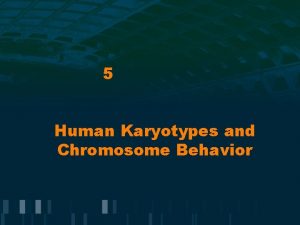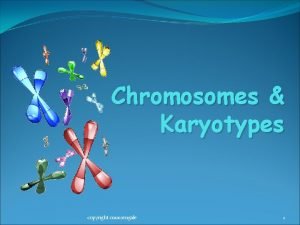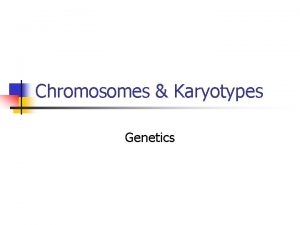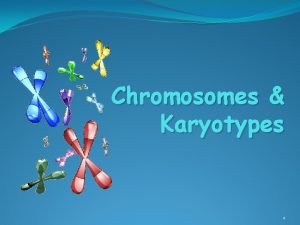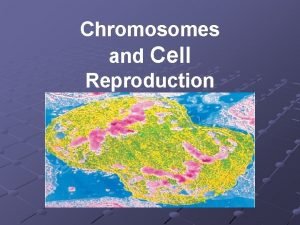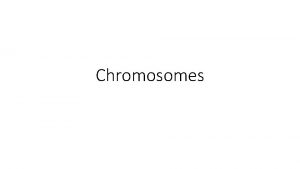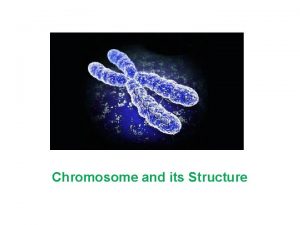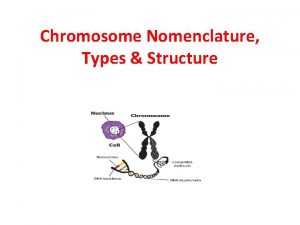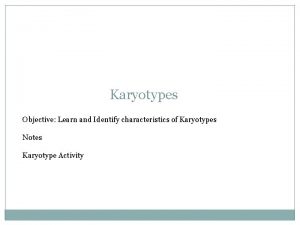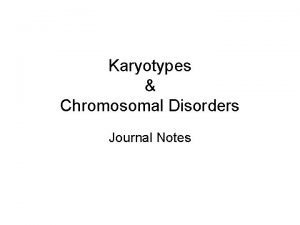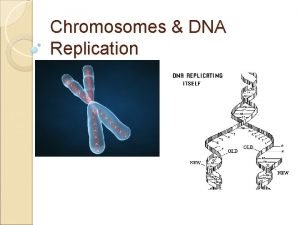Chromosomes and Karyotypes Chromosome Structure Metaphase Chromosome Histone



















- Slides: 19

Chromosomes and Karyotypes

Chromosome Structure Metaphase Chromosome Histone Proteins Double Helix

Chromosome Structure Metaphase Human Chromosomes

How Karyotypes are Created - I

How Karyotypes are Created - II • Well-stained metaphase spreads are photographed • Each of chromosome images is cut of the picture • Matched with its partner • Arranged from largest to smallest on a chart • The largest autosome is number 1

How Karyotypes are Organized Classification of solid-stained chromosomes Metacentric chromosomes: centromere in the middle. Acrocentric chromosomes: centromere close to one end; this gives very short p-arm.

Chromosome Maps TTT

Normal Human Karyotype

Normal Female Karyotype

Normal Male Karyotype

Patau Syndrome. trisomy 13 (47, XX, +13). It is rare for fetuses to go to term; less than 5% reach 3 years. Cleft lip and palate, broad nose, small cranium, polydactyl, deafness, and nonfunctional eyes, heart defects and severe mental retardation.

• Down syndrome – Trisomy 21 - 1/6 die within the first year and the average life span is 16. 2 years. mental retardation - IQ between 25 -74. • Short stature, broad hands, stubby fingers and toes, a wide rounded face, a large protruding tongue that makes speech difficult. • Individuals with this syndrome have a high incidence of respiratory infections, heart defects, and leukemia.

Klinefelter's syndrome with a 47, XXY karyotype. • This particular anomaly is relatively common (about 1 in 500 males), • Characteristics associated with this condition are tall stature and sterility.

Jacobs Syndrome - 47 XYY karyotype. • Occurence is 1/1000 live male births. • Men with this karyotype are tall and have lower mental ability.

Turner's syndrome, with karyotype 45, X. • unable to bear children. • short stature, short broad neck, and a broad chest. • Intelligence does not seem to be affected.

Cri-du-chat. - one chromosome #5 upper arm deletion Babies cry sounds like that of a cat in distress: severely mentally retarded, round face, low set ears, heart disease, and have a small cranium.

Edwards Syndrome. trisomy 18 (47, XY, +18). It is uncommon for fetuses with this condition to survive, 1 in 8000 live births. 10% survive one year highly characteristic pattern of malformations: elongated skull, a very narrow pelvis, rocker bottom feet and a grasping of the two central fingers by the thumb and little finger, ears are often low set and the mouth and teeth are small.

Practice Karyotyping

Genetic Testing for Chromosomal Abnormality • • • Trisomy 21 Trisomy 18 Trisomy 13 X, XXX, XYY, XXY 22 q 11. 2 deletion 5 p minus 1 p 36 deletion syndrome Trisomy 16 Trisomy 22 Chromosomal Abnormalities Name Downs Syndrome Edwards syndrome Di. Georgi syndrome Cri-du-chat syndrome Prader-Willims yndrome
 Metaphase
Metaphase Metaphase 1 vs metaphase 2
Metaphase 1 vs metaphase 2 Anaphase
Anaphase Metaphase of mitosis
Metaphase of mitosis How to read chromosome
How to read chromosome Bead like structures formed by dna and histone molecules
Bead like structures formed by dna and histone molecules Nucleosome model
Nucleosome model Histone pozitiv
Histone pozitiv Early fly
Early fly Non histone proteins
Non histone proteins Histone tail
Histone tail C value
C value A ________ is formed from beadlike histone-dna complexes.
A ________ is formed from beadlike histone-dna complexes. Pedigrees and karyotypes
Pedigrees and karyotypes H h
H h Whats a karyotype
Whats a karyotype Different types of karyotypes
Different types of karyotypes Karyotypes of klinefelter syndrome
Karyotypes of klinefelter syndrome Zwk9904 key
Zwk9904 key Using karyotypes to diagnose genetic disorders
Using karyotypes to diagnose genetic disorders
